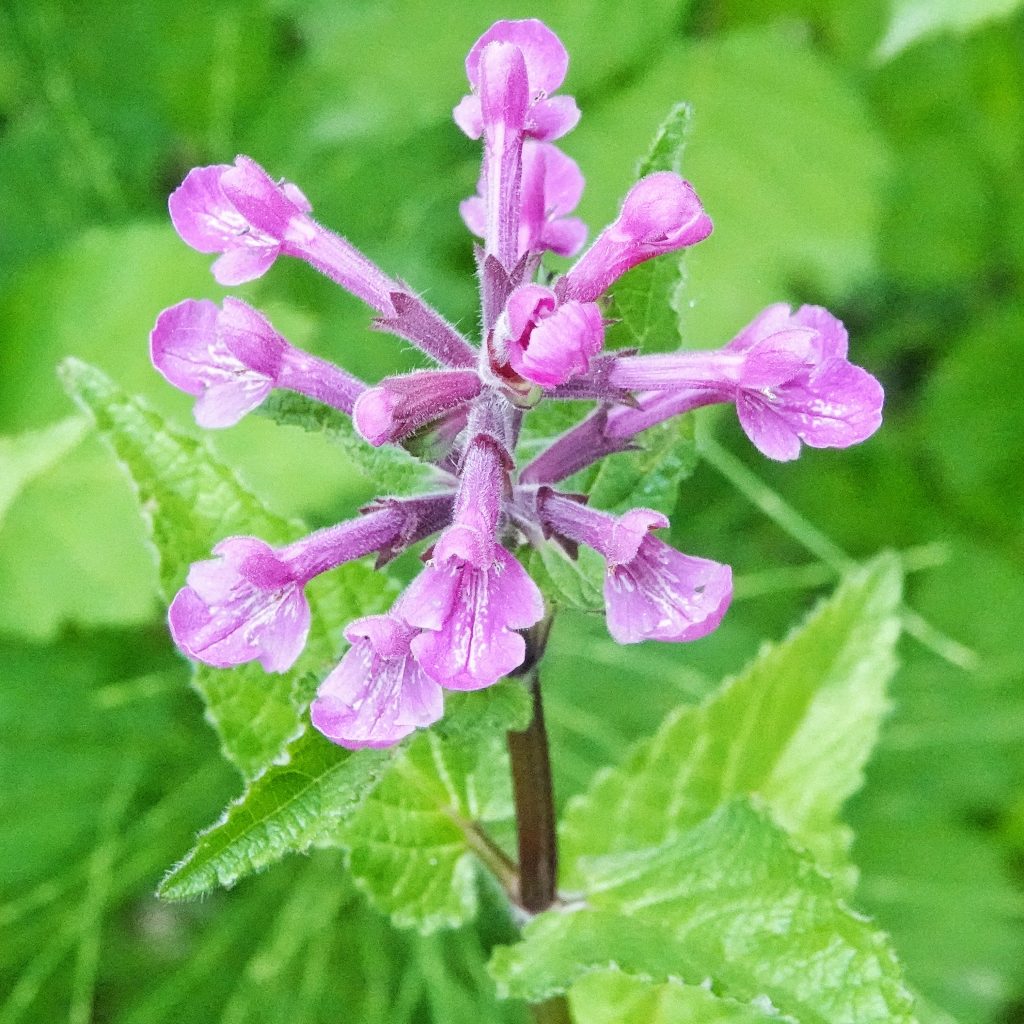
When in bloom this is the most readily identifiable hedge nettle in our region, because the flowers are much larger than those of any other Stachys (15-30mm vs 6-10mm) and the plants themselves are usually much taller (28-60” vs 8-32”). When I’m bulling my way through the undergrowth I often notice the distinctive, musty, old socks smell of Stachys in general before I even see the plants, and this smell and the square stems tells me I haven’t just bumbled into a patch of Urtica dioica (Stinging nettle) , which have mostly round stems, and no smell that my nose can perceive.
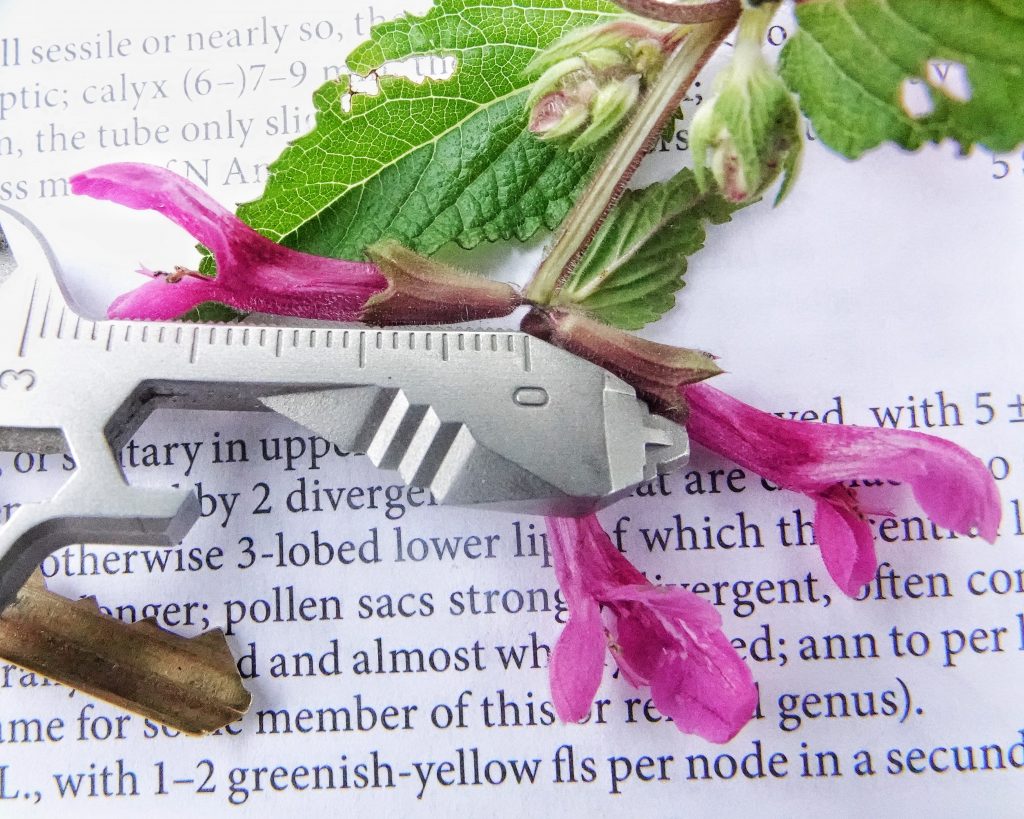
This plant in the mint family (Lamiaceae) goes by the common names Cooley’s hedge nettle, great betony, and great hedge nettle. It has also had other scientific names, including Stachys chamissonis var. cooleyae, and Stachys ciliata, which also appears to have been applied to what is now called S. mexicana. The flowers are quite beautiful, with their bright colors, mottled lip and throat, and bilateral symmetry, and the square stems and their well spaced, opposite leaves, are also somehow very pleasing to look at.
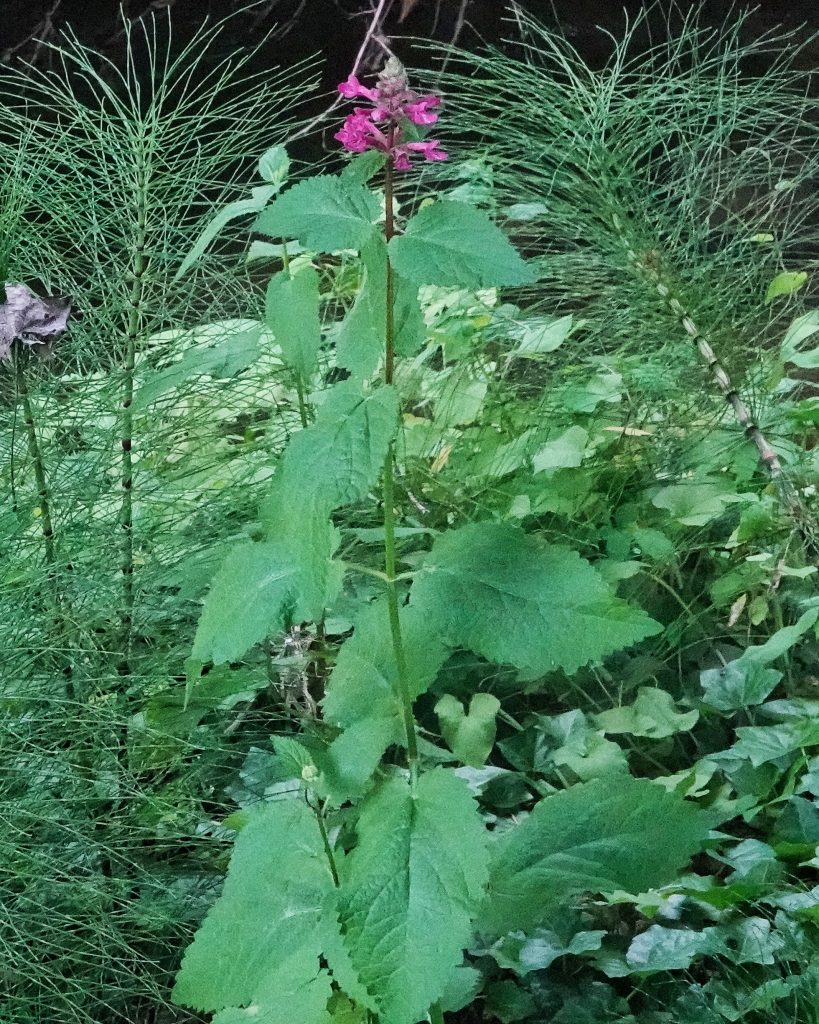
But Leslie Haskin was somewhat less enthralled, stating in ‘Wild Flowers of the Pacific Coast’ that it is a “… coarse, rank herb of the mint family, having, however, very evil smelling foliage, quite different from the pleasing scent of the true mints…Because of its coarse growth, this plant has a weedy aspect, but the flowers are bright enough to attract considerable attention. This plant is found in low, wet land, usually in shade, and its range extends throughout our territory.”
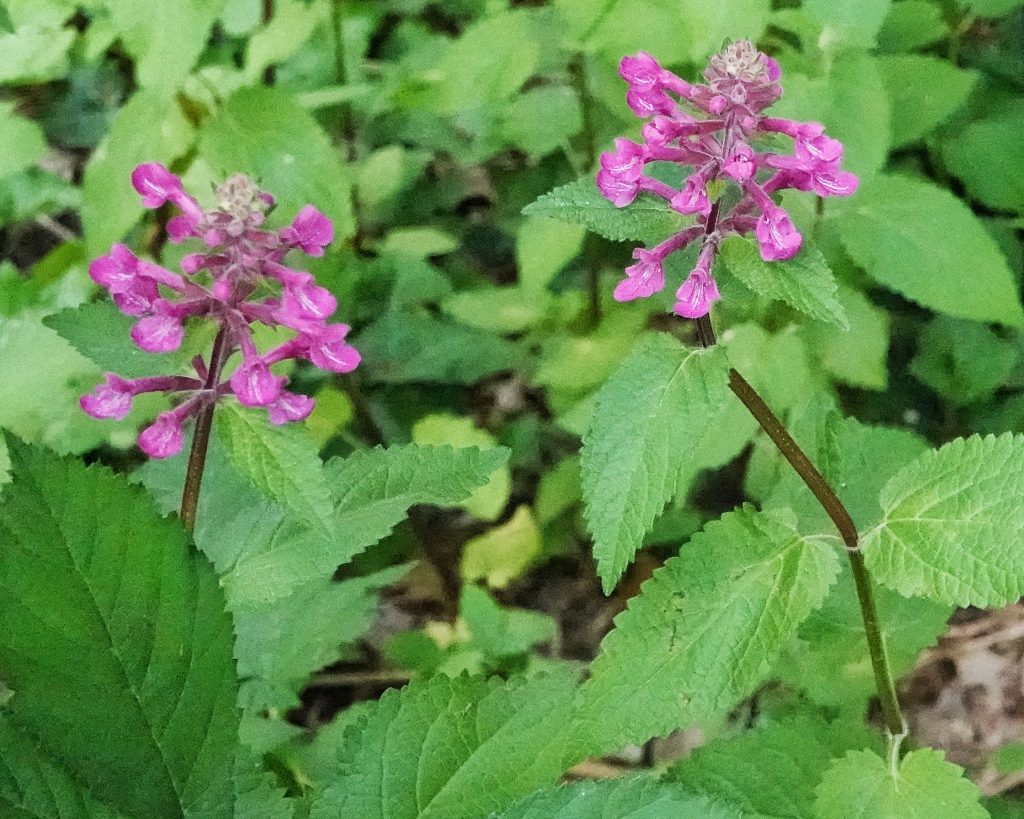
Ethnobotany– Due to the confusion over nomenclature, it is hard to say for sure what the ethnobotany of this species is, and the Native American Ethnobotany Database doesn’t list any of the three scientific names. But Moerman’s book “Native American Ethnobotany “ (1998), which appears to be the basis for the majority of information on the NAED site, has these listings under ‘Stachys ciliata, (as S. cooleyae)’- infusion of pounded roots used as spring tonic by the Saanich; plant fiber used to make nets by the Haisla and Hanaksiala; plants laid under fish to keep them clean by the Hesquiat. “The Saanich used the roots for a spring tonic. According to Paul (1968) “it really puts the life back into you.” The roots were pounded and steeped in hot water. Harry (1969) noted that it was eaten by wounded deer also.” [Turner&Bell]…Stems apparently chewed by Haida of the Queen Charlotte Islands” [Turner&Kuhnlein]…flower nectar sucked by Quinault of Washington” [Turner&Kuhnlein]” Stachys – Hedge-Nettle
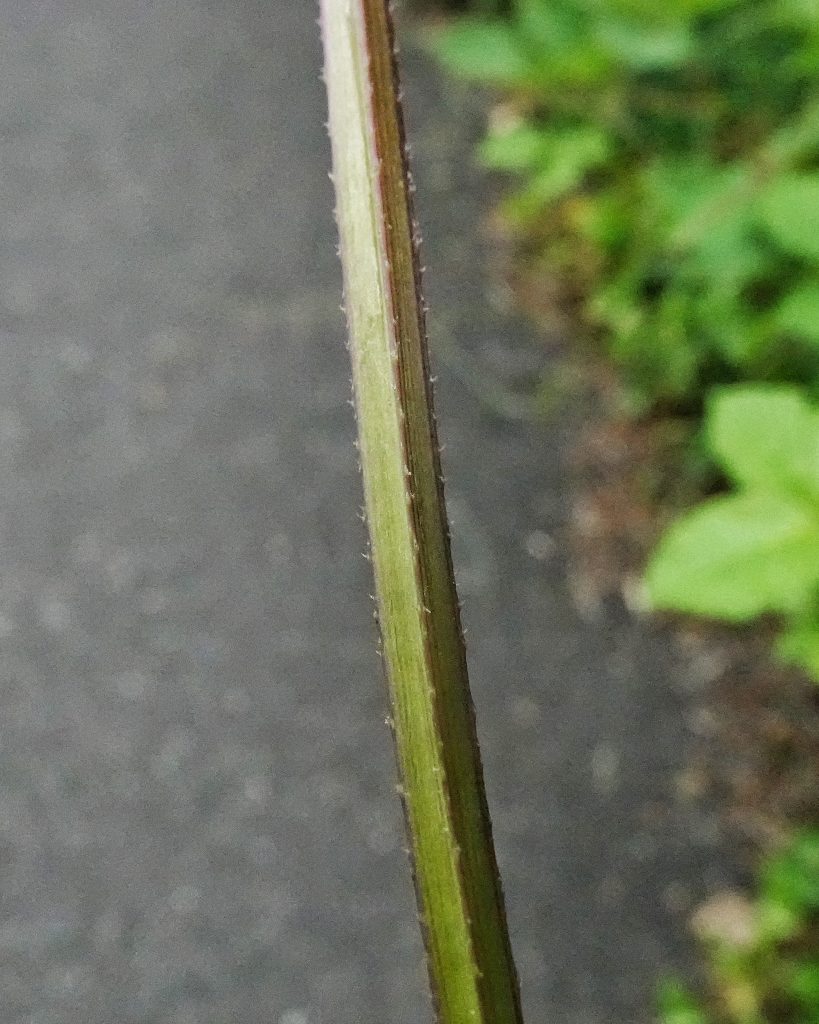
Description– Perennial; “Erect from spreading roots. Stems square, mostly unbranched, with stiff hairs on edges. Leaves opposite, triangular, 2–6 in. long, toothed, with rounded tip, hairy on both sides. Flowers deep red to purple, 1–2 in. long, hairy, sessile, with 2 lips: upper lip without lobes, lower lip larger and 3-lobed.” Stachys chamisonis</em> var. <em>cooleyae | Great Hedge-nettle | Wildflowers of the Pacific Northwest
Similar species– All of our other Stachys have flowers that are less than a half inch long; Urtica dioica (Stinging nettle) has more or less round stems
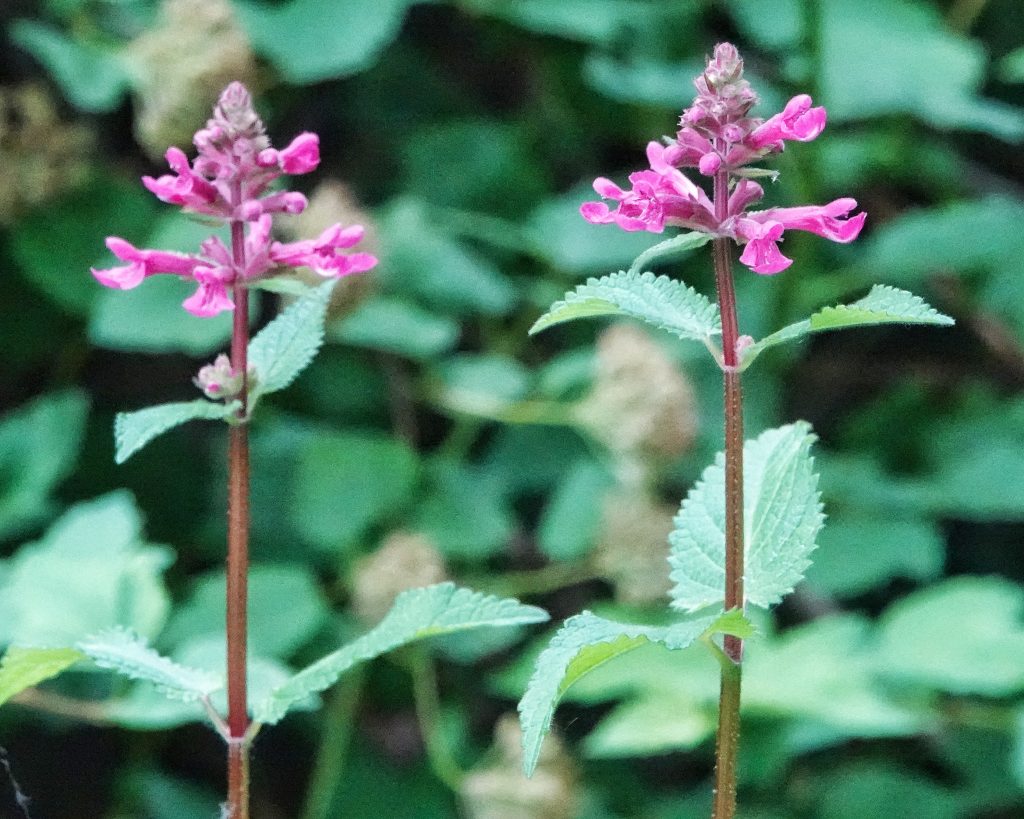
Habitat– “Very common in and near stream channels and also found in open woods, clearings and roadsides…Common understory species in open forests. Often found on gravel bars near rivers and streams in low elevations.” Cooley’s Hedge Nettle
Range-PNW endemic, found from Alaska to California; in our region it is found from the east slope of the Cascades to the Pacific, as well as sw Oregon/nw California.
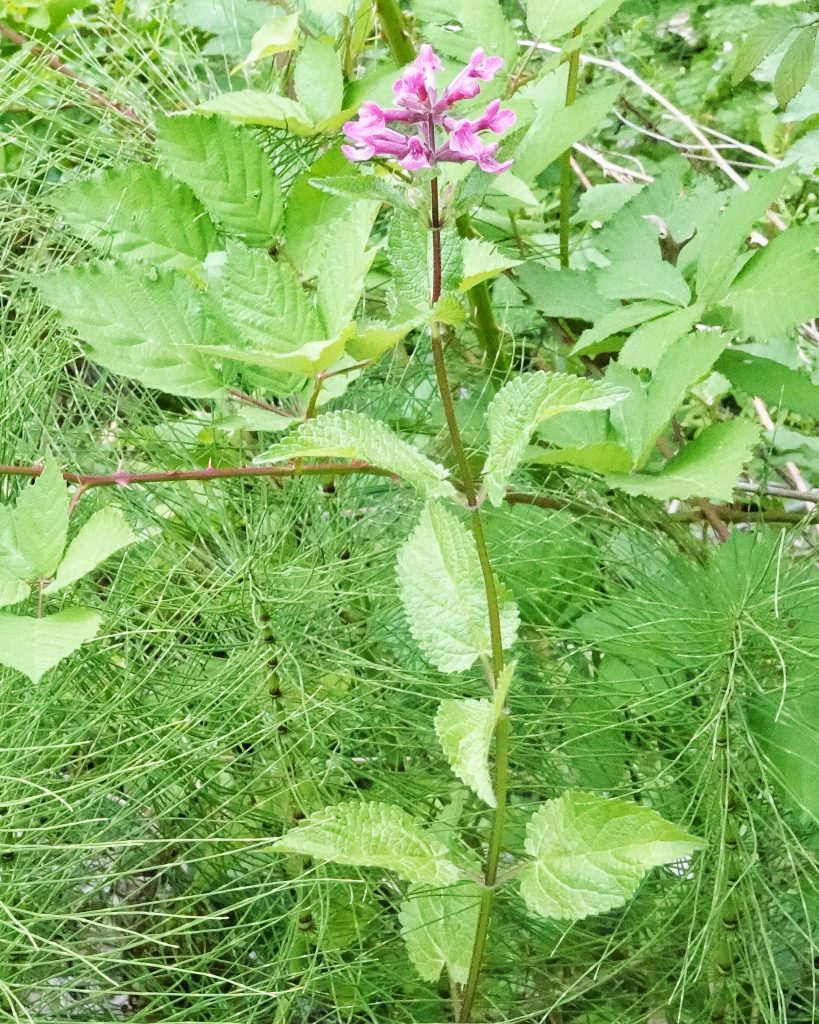
Eaten by– Larvae of the leaf mining flies Nemorimyza posticata, and some members of the genus Liriomyza utilize this as a larval host; there are any number of leaf beetles and true bugs that probably feed on this, but I can find nothing specific for this species; there are at least 11 species of lepidoptera known to utilize Stachys as a larval host, but I can find nothing specific for this species; butterflies and hummingbirds and a variety of other pollinators come for its nectar and pollen. My friend Michael Palmer, an enthusiast of plant mining larvae who has collaborated with Charlie Eiseman, says that the “stems are also galled by a presumably undescribed (never reared) cecidomyiid, probably Neolasioptera. In very wet settings lower leaves are mined by a chironomid midge.”
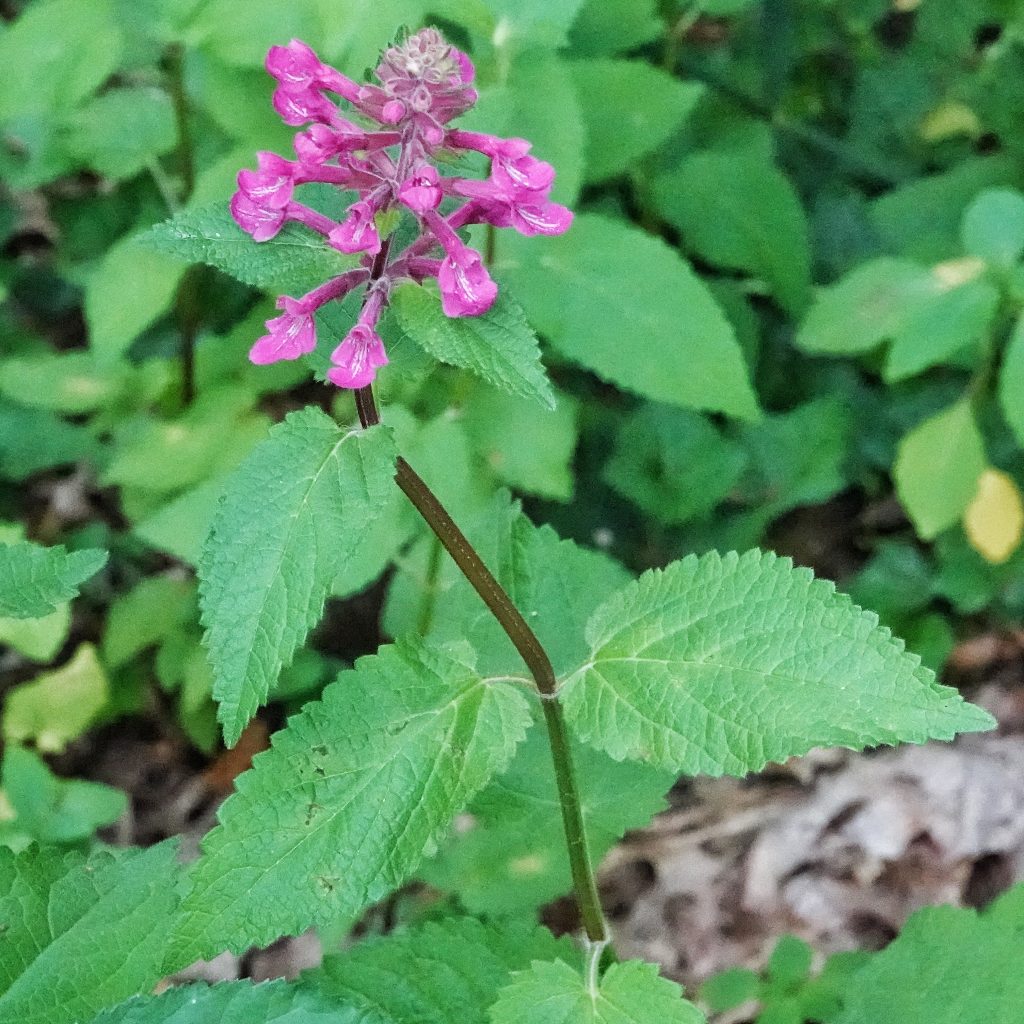
Reproductive timing– Flowers bloom June through August
Etymology of names– Stachys is from the Greek word for ‘an ear of grain’, and refers to the shape of the inflorescence. The specific epithet cooleyae pays homage to “American botanist Grace Emily Cooley (1857-1916), author of Impressions of Alaska: with a List of Plants Collected in Alaska and Nanaimo, BC (1892)”.
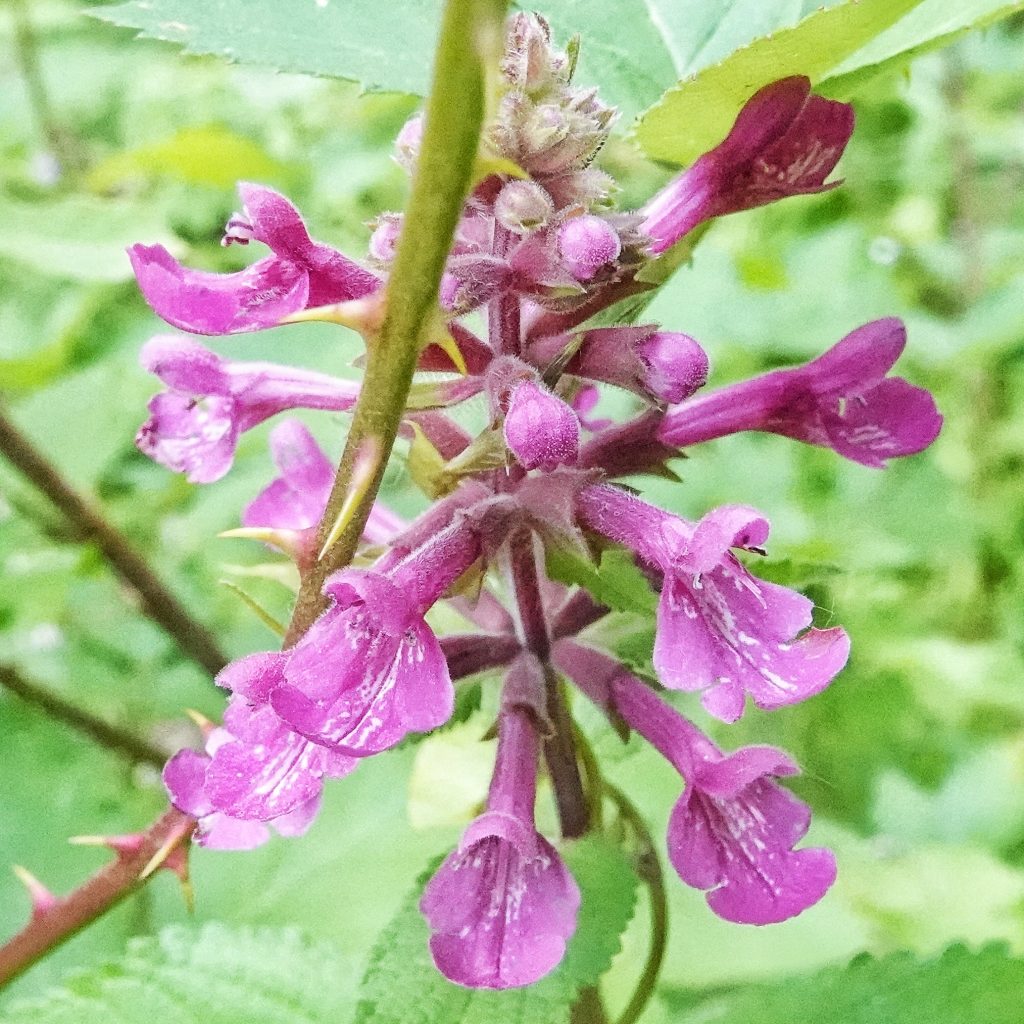
Stachys cooleyae – Burke Herbarium Image Collection
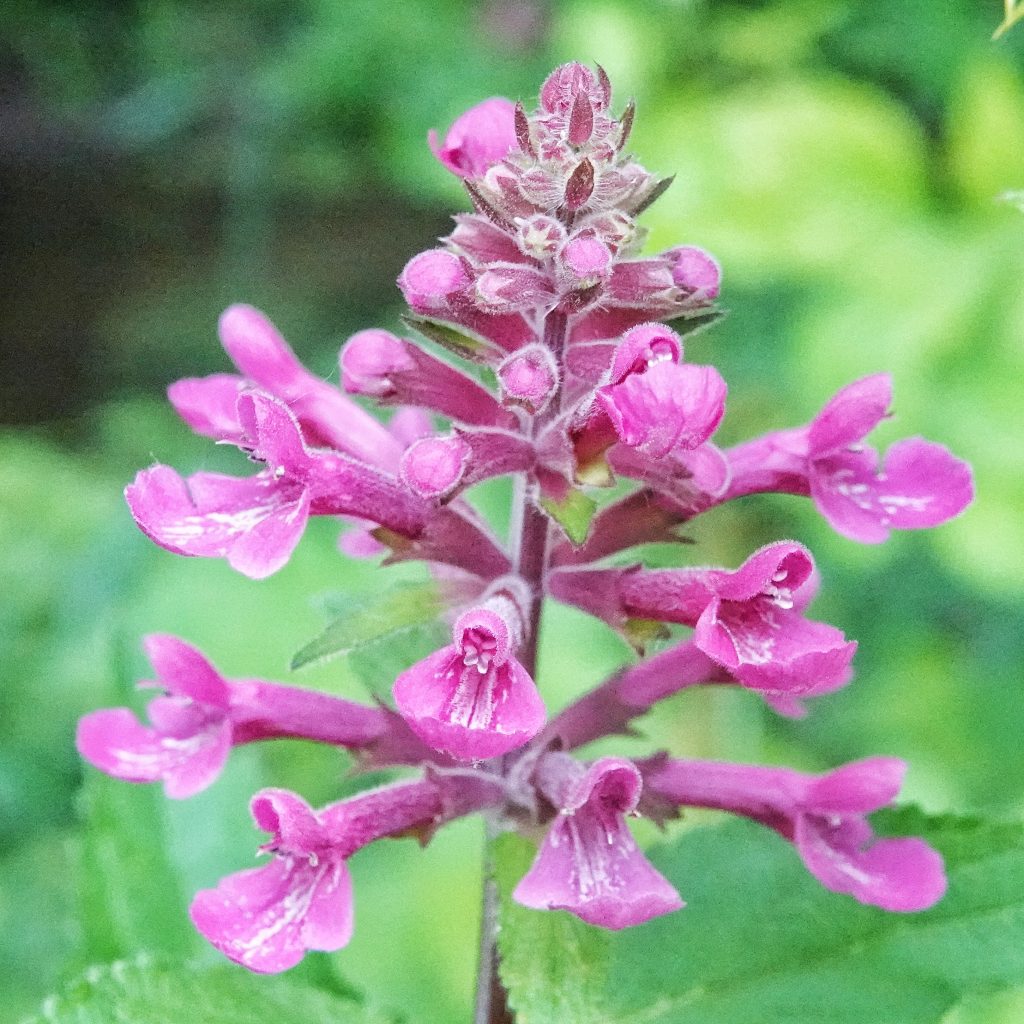
Is this the same, about a week ago at Tryon Creek State Natural Area in Portland:
https://www.inaturalist.org/observations/169878466
Probably, unless those leaves are smaller than they appear. Beautiful photo!
Thank you!